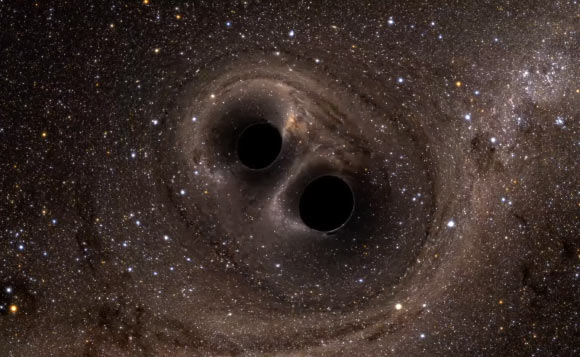
Astronomers Propose New Mechanism for Growth of Supermassive Black Hole Seeds | Astronomy
In a paper published in the Astrophysical Journal, a team of astronomers in Italy proposes that heavy seeds of supermassive black holes formed via the migration and merging of stellar compact remnants (neutron stars and stellar-mass black holes) in early-type galaxies.The collision of two black holes. Image credit: Simulating eXtreme Spacetimes Project.Black holes are objects so dense that not even light can escape their gravity, although powerful jets of light and energy can be emitted from a black holes vicinity as gas and stars are sucked into it.Small black holes result from the collapse of individual stars. But the centers of most galaxies are occupied by supermassive black holes that contain mass ranging from one million to 10 billion solar masses.The growth of supermassive black holes occurs in the central regions of galaxies, progenitors of the current elliptical galaxies, which had very high gas content and in which the stellar formation was extremely intense, said SISSA astronomers Lumen Boco, Andrea Lapi and Luigi Danese.The biggest stars live a short time and very quickly evolve into stellar black holes, as large as several scores of solar masses; they are small, but many form in these galaxies.The dense gas that surrounds them has a very powerful definitive effect of dynamic friction and causes them to migrate very quickly to the centre of the galaxy. The majority of the numerous black holes that reach the central regions merge, creating the supermassive black hole seed.According to classical theories, a supermassive black hole grows mainly by sucking in vast amounts of matter. During the initial phases of its development, when the mass of the black hole is small, the growth is very slow.To the extent that, according to the calculations, to reach the mass observed, billions of times that of the Sun, a very long time would be required, even greater than the age of the young Universe. Our study, however, showed that things could go much faster than that, the astronomers said.The researchers show that the process of dynamic migration and fusion of stellar compact remnants can build up central black hole masses of the order of between 10,000 and one million solar masses within some 10 million years.At this point, the growth of the central black hole according to the aforementioned direct accretion of gas, envisaged by the standard theory, will become very fast, because the quantity of gas it will succeed in attracting and absorbing will become immense, and predominant on the process we propose, they said.Nevertheless, precisely the fact of starting from such a big seed as envisaged by our mechanism speeds up the global growth of the supermassive black hole and allows its formation, also in the early Universe.In short, in light of this theory, we can state that 800 million years after the Big Bang the supermassive black holes could already populate the cosmos._____L. Boco et al. 2020. Growth of Supermassive Black Hole Seeds in ETG Star-forming Progenitors: Multiple Merging of Stellar Compact Remnants via Gaseous Dynamical Friction and Gravitational-wave Emission. ApJ 891, 94; doi: 10.3847/1538-4357/ab7446
……Other
Comments
Leave a comment in Nestia App